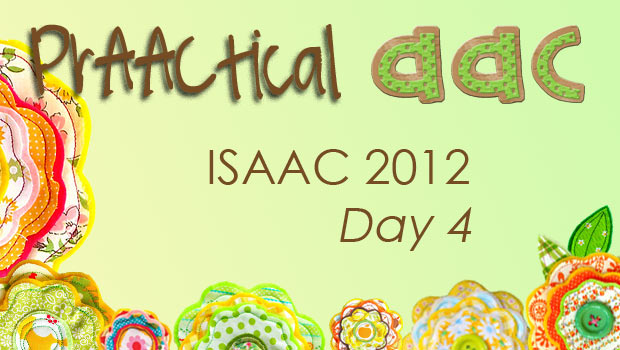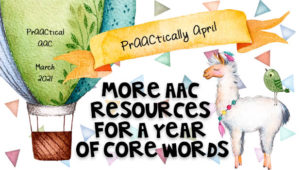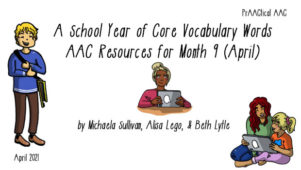Day 4 of ISAAC, 2012

Lots more ISAAC fun to tell about in Day 4!
—
/ISAAC_PreConf_Workshop_2.png)
My day started with a shorter version of the presentation on the preschool core language curriculum that I’m working on with Lori Wise. You can see the handout for that presentation here.
—
There is some fascinating work going on in the area in supporting the emotional development of children with AAC needs. Dr. Sarah Blackstone and colleagues talked about the developmental sequence in which emotional competence emerges. They are working on an observation and interview tool used to collect information on a child’s emotional development and the caregiver strategies. They are planning a pilot study with the tool they are developing and actively looking for volunteers to use this tool with children who are developmentally between 12 months and 10 years.
–
Terry Foss and and Jane Korsten did an interesting presentation called Promptology 101 where they reviewed some of the research literature on prompting. I loved the way that they referenced the cognitive supports we all use, like lists, alarms, and reminders, to set the stage for a discussion of time delay, and most-to-least and least-to-most prompt hierarchies. One big take-away from their presentation relates to how we respond when learners aren’t exhibiting the desired behavior. Usually, the path to success is NOT through prompting but through additional opportunities for exposure and practice. The handout will be available on their website next week.
–
AAC Core meets Common Core. Exciting work is happening in the world of core vocabulary. Karen Erickson, Penelope Hatch, and Marlene Cummings presented on the intersection of core vocabulary for AAC and the development of core academic vocabulary. They are working to identify the words that will be needed for students to actively participate and learn in classrooms in states adopting Common Core Standards. This is an incredible project with far-reaching implications and one we will be watching.
–
A real highlight of the day was a presentation on the four blocks model by Jane Farrall. The presentation described a project that she did in a very rural area of New South Wales Australia where there was no AAC in place in a special needs school for children with moderate to severe intellectual disabilities. It was daunting task to transform the school from a situation in which there was little active teaching to one in which the Four Block model was implemented consistently. It was enlightening to see how providing a range of tools and considerable support from Jane, the teachers were successful in helping their students participate in shared reading, guided reading, shared writing, working with words, and self-selected reading. I enjoyed hearing how they successfully used Abilipad and other alternative pencils for authentic writing. I especially loved the idea of having a day of the week set aside as ‘letter writing day,’ in which all the students did free writing to compose a letter to another student. One student would then function as the letter carrier and deliver the mail. Easy to see how this would become a favorite activity for students and teachers alike. It was amazing how Jane was able to influence them to implement so many great ideas, like the Principal’s bulletin board that featured a writer of the week and other samples of student writing, and custom alphabet books based on student interests. They’ve have great success with the language and literacy gains: about half of the students made a full year’s worth of gains. There was also a 75% decrease in challenging behavior. You can get a glimpse of the project here. Jane has generously shared some of the materials developed for that project on her website. You can find some of those downloads here.
The day ended with the President’s Reception at the Heinz History Center. It was a lovely venue to catch up with friends, watch the sunset, and tour the museum to learn about local history.
–
Filed under: PrAACtical Thinking
Tagged With: Conference, core vocabulary, Four Block, ISAAC 2012, Jane Farrall, presentations, resources, Sarah Blackstone
This post was written by Carole Zangari





